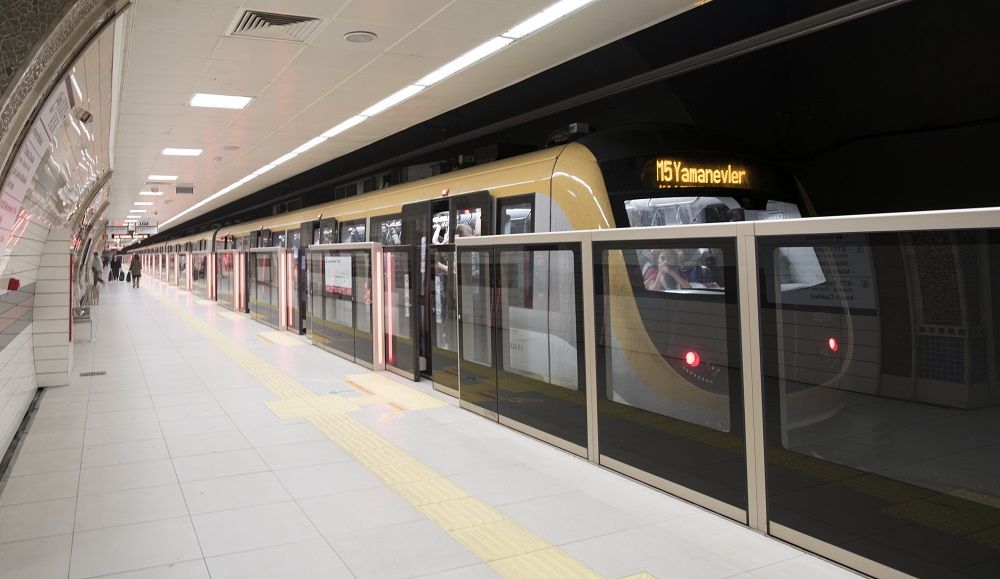

AutonomyNow unveils its most advanced ADAS System for a higher level of safety in buses [Sponsored]
Key facts
ADAS System by AutonomyNow is a complete solution aiming to effectively prevent collisions involving pedestrians, cyclists and other road users
The System has been homologated for R10 and is designed to be applied in all Bus&Coach vehicle types
AutonomyNow is the first company to provide a solution to all autonomy-related requirements of the GSR2 Regulations, with the start of series production scheduled for Q4 2023
Advanced Driver Assistance Systems (ADAS) are the next step on the long road to assuring safety. The technology works by assisting drivers to prevent or mitigate crashes. According to research, over 90% of road accidents are caused by human error [1]. Various studies have analyzed the impact of active safety functionalities such as Emergency Braking. The research found that driving assistance systems could reduce vehicle crashes by over 33% – 41% [2] [3] thus significantly improving safety on the roads.
One step toward reaching this goal is the implementation of the new General Safety Regulation (GSR2) for new vehicle registrations, coming into force on the 6th of July 2024. The upcoming safety measures are there to better protect passengers, pedestrians and cyclists across the EU, expectedly saving over 25,000 lives and avoiding at least 140,000 serious injuries by 2038. It is a milestone on the way to European Commission’s ‘Vision Zero’ – zero fatalities and serious injuries by 2050.
New technologies in practice
The urban environment is very complex. To mitigate hazardous traffic situations, ADAS Systems need to perform sophisticated situational analysis in real-time and in all weather conditions.
To ensure safety in the most demanding situations, AutonomyNow utilised object detection and classification with the use of the next generations of Transformer Neural Networks and advanced hardware&software sensor solutions.
The result is an ADAS System that detects objects with a latency time of up to 150ms. While the standard human reaction is about 1.5 s, current computer vision algorithms can speed it up by a factor of 10 while maintaining high precision of detection.

Safe autonomous braking
To ensure the highest level of safety and reduce reaction times to a minimum, one must consider frontal hazards and the automation of the braking system response. The AEB (Autonomous Emergency Braking) function must be adapted to specific conditions of a city bus to ensure the safety of standing and sitting passengers not fastened under a seat belt.
For that reason, the AutonomyNow R&D team developed an advanced emergency braking mechanism with city buses in mind. It provides a safe response by first alerting the driver and then applying the brakes in a mild way not to endanger city bus passengers.
The System has been designed in collaboration with automotive experts and rigorously tested according to Automotive standards as well as analysed under Functional Safety (ISO 26262) and Safety of the Intended Functionality (ISO 21448) methodologies.
Eliminating false positives
One of the key requirements of an ADAS System is the minimisation of so-called False Positives. It is estimated that a safe AEB system in a city bus should not activate falsely more frequently than once in 600.000 km. [4]
Thanks to the multi-criteria analysis of information from different sensor technologies, the so-called Sensor Fusion, it is possible to minimize false positives and maintain high-quality activation signals. The key is in the proper training of the neural networks based on real-world operational data, tailored to fit the attributes of a commercial vehicle.
Correct calibration of the sensors utilised – advanced ultra-high definition radar and low latency cameras – is also of vital importance to eliminate false positives in operation. Lastly, apart from multiple filtering software techniques, hardware solutions must be employed – such as a water and dirt-repellent cover of the external camera lenses to minimise occlusion as well as reducing wear and tear of the system.
European leadership in safety on board
The upcoming regulations not only provide a framework to implement known safety-related features but also introduce new ones as a new standard for future mobility. One of the latest changes is the introduction of driver monitoring systems concerning drowsiness and distraction. In the age of increasing autonomisation of vehicles – and high distraction from the use of smartphones – it is of crucial importance to assess the driver’s state of alertness and provide a timely response. In a recent study of over 8,295 accidents, more than 12% were caused by fatigue. [5]
ADAS Systems by AutonomyNow utilise facial analysis models to assess driver’s behaviour on the so-called Karolinska Sleepiness Scale, an attempt to provide a universal scale of drowsiness. Additionally, the system monitors the driving patterns available from the CAN interface to detect a sudden decrease in the driver’s activity.
AutonomyNow has already implemented such technology in more than 183 vehicles driving on European roads.
[1] Road safety: Commission welcomes agreement on new EU rules to help save lives Brussels, 26 March 2019
[2] Yue, L., Abdel-Aty, M., Wu, Y. and Wang, L., 2018. Assessment of the safety benefits of vehicles’ advanced driver assistance, connectivity, and low-level automation systems. Accident Analysis & Prevention, 117, pp.55-64.
[3] European Commission (2021) Facts and Figures Buses/coaches / heavy goods vehicles. European Road Safety Observatory. Brussels, European Commission, Directorate General for Transport.
[4] The Transport for London Bus Safety Standard: Advanced Emergency Braking (AEB).
[5] Dinges, D. (1995) An overview of sleepiness and accidents. Journal of Sleep Research, 4(2), pp. 4-14












